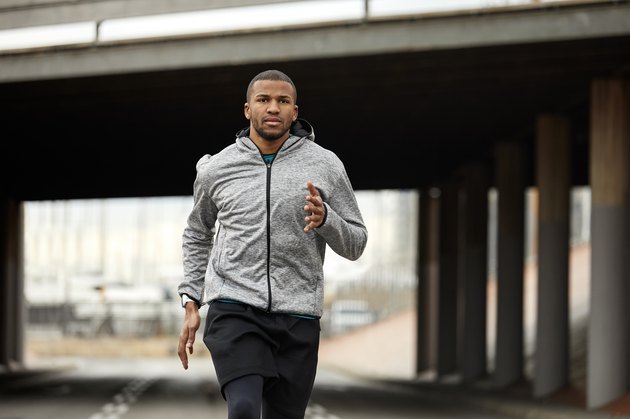The Beginner-Friendly Guide to Running
Advertisements
Running is a natural human sport. So why does it look like such a complex sport? (picture: morsa images / iStock / gettyimages) lace up. Hit the sidewalk. Go ahead. In some ways, running represents the simplest exercise or exercise. but just browse instagram or stroll in the running shop, you will feel a little confused and scared. How do you choose the right shoes? How far and how fast should you train? How can you not get hurt? Don't let these problems get in the way of us getting started. With some basic knowledge, you can change from a new runner to a practical professional in a few weeks or months. Here are the basics to remember when you take the first step. First, set a running goal and ask yourself: why do I start running? Whether it's to lose weight, improve your health or make active friends, you may have one (or several) reasons. But most runners, regardless of their level of experience, will do better if they have a race on their schedule, said Lucas Larsen, general manager and coach of heartbreak mountain running in Chicago. The race can be as short as a mile, as long as a marathon (26.2 miles) or even longer. If you have enough time to train, most of the game goals can be achieved. Denise sauriol, a coach at run for change in Chicago and author of I, you, says even new runners can run marathons if they want to. Although marathon is an impressive event on your list, the longer the race, the more time you need to train. Starting from a shorter distance of 5 kilometers (3.1 miles) is still a major achievement and reduces your risk of being burned or injured. &"I would prefer people to fall in love with the sport, have time to enjoy it, and then start gradually challenging their distance," Larson said. "Next, once you've set your goal, choose a training plan. You can consult your coach or choose an online training plan to help you get to the finish line from where you are now. The program will list the basics - how often, how far, and how you can improve over time, said Geoff Tripp, a marathon runner, super marathoner and head coach of fitness application trainiac. Before you start running, you should be able to walk briskly for 30 minutes, three to four times a week. From there, the smartest way to exercise is to increase the running interval when walking. It's true even if you have a strong background in different sports. &"If someone has a lot of experience in aerobics, but it's all about cycling or swimming, you can run a marathon today with lungs, but your joints are not ready for a hard hit," Larson said. "If you're not familiar with running, sorior suggests dividing a 10 minute run into a 9-minute fast walk and a 1-minute jog - or eight plus two or seven plus three - anything that feels challenging but not overwhelming. Repeat until it reaches 40 minutes; do it three times a week. She said, walk fast, just like you need to pee, you can't find the bathroom. But jogging is slow enough to have a conversation. From then on, gradually increase the length of jogging interval and the total duration of exercise. Don't screw things up more than 10% a week, sauriol says. Doing too much, too early, increases the risk of injury. You don't need expensive GPS watches or designer sports sunglasses, but investing in basic equipment can greatly improve your running experience. Running shoes may be the key. Your best option: go to a local running store and get a trained salesperson to help you put on shoes that match your feet and running plan, sorior said. When you're there, buy a couple of hygroscopic socks to keep your feet dry and prevent blistering. Running suits made of similar materials - shorts or pants, shirts and sports bras - can keep sweat away from the skin and reduce chafing, Tripp said. Larson also suggests buying a water bottle that you can carry with you, whether it's tucked into your belt, tied in your armband or held comfortably in your hand. This way, you don't have to look for water fountains or worry about dehydration. Focus on the right form of running. Few topics cause confusion like running. Go to a race or watch a few runners pass in the park and you'll find that everyone's strides look different. This even applies to the top elite and professional runners, soliol said. However, remembering some simple tips can help you run more smoothly and efficiently, which may improve your speed and reduce the risk of injury. First, think about your body posture. &"Pretend you've tied a rope to your head and someone's pulling it up," Larson said. &Keep head neutral, shoulders back, eyes and chest up. This will keep your respiratory tract open so you can absorb enough oxygen to support your training. start there, lean forward a little, start at the ankle. &"Running is really going forward and grabbing yourself," Larson said. If you start in a completely straight position, or even lean back, moving forward requires more energy. Advertisements sauriol tells her runners to "hip to hip" and "potato chips" with their arms swinging at a 90 degree angle next to their bodies, up to the nipples, and down to the hips. Avoid having your arm swing in the middle, which can hinder your motivation. And don't clench your fists; the tension of crushing chips on your hands will also drive your neck and back, tightening your whole body. Keep smart and prevent running injuries In a study published in the American Journal of sports medicine in 2018, two-thirds of runners had at least one injury in two years. But that doesn't mean you can't hold them back. The primary reason I see running injuries is that runners try to increase the amount of training too much and too fast, says Tripp. Setting a reasonable goal and following a smart training plan that increases by no more than 10% a week can reduce the chance of damaging joints, muscles, tendons or bones, Larson said. before each run, perform dynamic warm-up actions such as lunges, jumps and kicks to prepare muscles for vigorous running. After a run, when your muscles become warm, relaxed, and soft, don't do static stretching (for example, a quadriceps or hamstring strain learned in PE class). It's the same with regular replacements, said SARIO, every 300 to 500 miles, or a year, whichever comes first. After a period of time, the buffer system that absorbs the impact of each step will collapse. Many runners will notice new small pain and small pain, if your body gives you a punishment flag - a pain that changes your gait, doesn't disappear because of new shoes, or lingers or worsens after a short rest - it's better to take a break and seek treatment from a sports doctor, chiropractor, physiotherapist or podiatrist. Continuing to run without treatment can lead to more serious injuries and keep you off the road or trail for a longer period of time, soliol said. Mastering running nutrition and hydration If you don't give your body enough fuel to cope with the mileage you're re re recording, you may get injured or sick, Larson said. A healthy runner's diet starts with whole foods - lots of vegetables, fruits, whole grains, lean protein and dairy products. Carbohydrates are a major part of the body's energy needs to function well, but protein and healthy fats from foods like avocados and fatty fish are also important. Running for an hour or less does not require any specific nutrition strategy, so what you eat in advance and when are your personal preferences. You only need water on the road. Tripp says that if you run for more than 90 minutes, you'll burn 150 to 200 calories of carbohydrate food, which helps your stomach. It can be gels, sports drinks or fruits. It's also vital for your health and performance to stay hydrated. To a large extent, drinking water works well when you are thirsty again. If you're running long distances at high temperatures, you also need to supplement electrolytes - minerals like sodium and potassium - to ensure proper fluid balance. You can go through foods like bananas, which are rich in potassium, or through sports drinks and similar products, sorior said. Tap on your tunes to prove that music is a powerful motivator. In a 2018 study in the journal intensity and conditioning research, runners thought their exercise reduced taxes when squeezed into a favorite song. It's a matter of personal preference what kind of music moved you. You can build your own playlist, Larson says, or you can use services like spotify to plan. but if you're running outside, make sure your music doesn't affect your safety. Run with only one earplug or headphones. &Realize that the environment around you is the key, so don't tune too heavily, Tripp said. If a cyclist, a car or another runner comes, you'll want to know. All the benefits of running - from a strong body to a healthy heart to a final Medal - are built over time. But Advertisements




